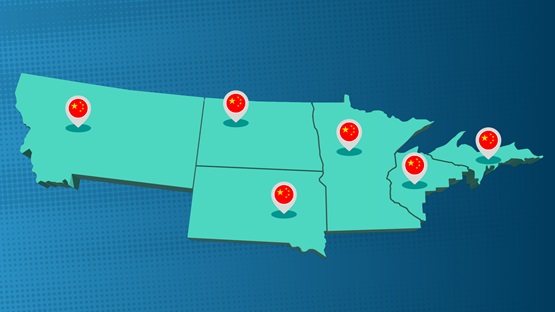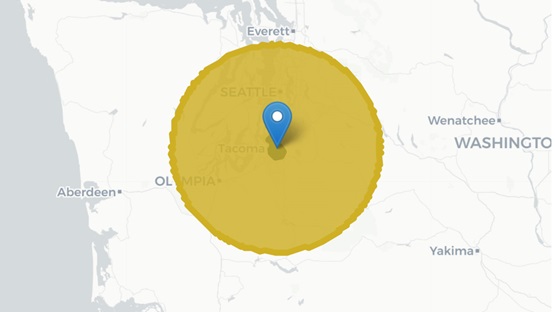In 20 years, the construction industry will need to be more like the shipbuilding and aircraft manufacturing industries, said David Mortenson, chairman and CEO of Twin Cities–based M. A. Mortenson Co.
Construction remains a labor-intensive field, and firms have been slow to adopt mass production techniques that can ease labor needs. But those techniques may be the key to future growth. The worker shortage construction firms struggle with now is likely to worsen as more baby boomers retire.
“We’re going to be in a tight labor market forever if we don’t actually change our productivity curve. We’re really, I think, going to be in trouble in the next decade,” Mortenson said at the Minneapolis Fed’s seventh annual Regional Economic Conditions Conference.
The mid-January event wasn’t solely devoted to worker shortages, but that topic made its way into every discussion. Demand for workers remains high in every district state, and the supply of workers has not kept up.
Lack of workers hurting growth
As of November, unemployment in Ninth District states ranged from 1.9 percent in North Dakota to 4.3 percent in Michigan, according to the Bureau of Labor Statistics. All but Michigan enjoyed lower rates than the national average of 3.7 percent. The national unemployment rate just before the pandemic was 3.5 percent.
David Flynn, a University of North Dakota economist, said business owners tell him that because it’s so hard to hire right now, their expansion plans are at risk. The construction industry is especially struggling, he said.
Even Montana, which has a booming population, is struggling, according to State Economist Amy Watson. “What we’re consistently hearing from businesses across the state is that they’re having difficulty recruiting and retaining high-quality workers.”
Supply and demand
One reason it’s hard to hire is that demand for workers is higher than the number of available workers in many states.
Before the pandemic, the ratio of unemployed people to job openings was already at historically low levels in the Ninth District, according to Matthew Kures, an economic development expert at the University of Wisconsin–Madison. Since then, the ratio has been lower still in many states (Figure 1). In Wisconsin, for example, there were 0.6 unemployed workers for every job opening in October.
The ratio for most Ninth District states was lower in October than the U.S. average of 0.7. That’s as low as the lowest ratio in the pre-pandemic economic expansion.
Another reason for the labor shortage is the decades-long decline in the labor force participation rate. This rate is the share of the working-age population that’s working or looking for work. More and more people aren’t doing either, a trend that worsened during the pandemic (Figure 2).
But labor force participation, when broken down by age groups, has not changed much over the years, according to Watson. What has happened is the workforce has gotten older. Younger age groups with high participation are shrinking and older age groups with low participation are growing.
“It’s not that individuals within a particular age category are less likely to work than they were before the pandemic,” Watson said. “It’s that we’ve had those consistent shifts from that prime working age population into the population age 65 and up.”
The pandemic also sped up retirement plans for many workers.
“We do have an aging population and, with a good housing market, a good stock market, people who had planned to retire anyway just decided to retire a little earlier,” said Angelina Nguyễn, research director at Minnesota’s Department of Employment and Economic Development.
Yet, Minnesota’s 68 percent participation rate is one of the highest in the nation, she said. The national rate is 63 percent, which she said, is lower than in all the neighboring states.
Participation rates are beginning to rise in some district states, though only Michigan’s is higher than pre-pandemic.
Coping strategies
To cope with labor shortages, many businesses are making their jobs more appealing to workers. Raising wages or offering flexible schedules are common strategies. Some businesses are even offering unlimited time off or four-day work weeks, conference participants said.
Employers are also broadening the pool of people they’re willing to hire. That includes those with less education, less training, or disabilities.
“We do a job vacancy survey in our office. And what we’ve seen over the years is more and more employers dropping educational requirements in their job postings,” Nguyễn said. “It’s okay if you come to the job with hands-on experience.”
To tackle big demographic shifts, businesses are working within coalitions, such as Invest UP in Michigan’s Upper Peninsula.
Amy Berglund, Invest UP’s director of business initiatives, said the region is not only losing population but also aging rapidly. “Right now, our largest population age demographic is the 55-and-plus age group, which is not helpful to the future of our labor market.”
One of Invest UP’s key strategies is to work closer with regional universities that attract students from outside, according to Berglund. That includes helping employers to hire those students and keep them in the region.
In the long run, as the nation’s population ages, states and regions may be competing for a more limited labor pool. If so, worker productivity would have to grow in order for the economy to grow.
Joseph Santos, an economist at South Dakota State University, said productivity is a potential “long-term headwind” for the state’s economy.
Currently, South Dakota has a growing labor force, high labor force participation, and low unemployment, according to Santos. Yet productivity per worker lags the national average.
Improving productivity will require investments in technology and education, Santos said, but it will take a long time to see improvements.
Tu-Uyen Tran is the senior writer in the Minneapolis Fed’s Public Affairs department. He specializes in deeply reported, data-driven articles. Before joining the Bank in 2018, Tu-Uyen was an editor and reporter in Fargo, Grand Forks, and Seattle.





